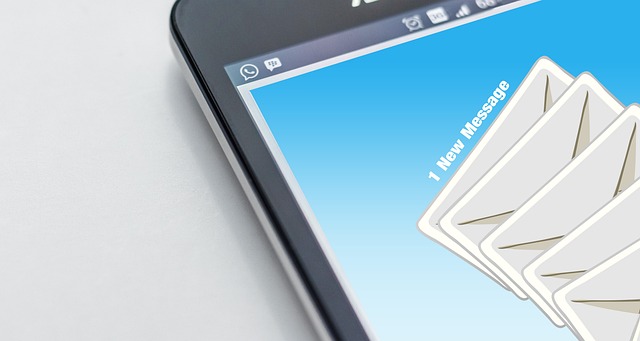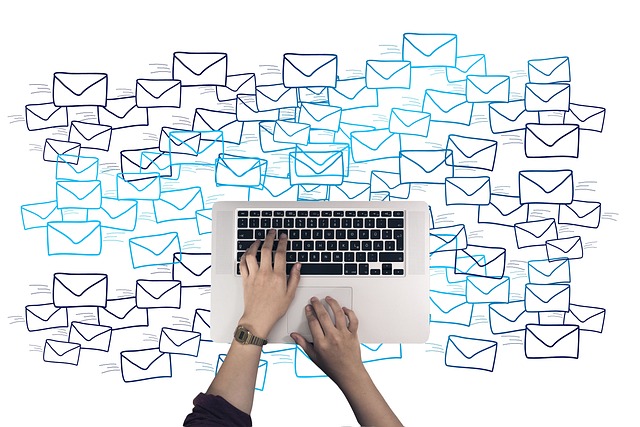How Often Should You Email Your List? Finding the Right Frequency

Figuring out how often to email your list can feel like trying to solve a mystery. Many marketers find themselves pacing the floor over this, aiming to strike that perfect balance between keeping their brand in the spotlight and steering clear of becoming another unread message in the spam folder.
Getting it right not only boosts your click-through rates but also plays a big role in keeping your subscribers around, which, of course, drives revenue. With some data pointing towards two to three emails per week as possibly hitting the mark, it’s evident there’s some detective work needed here.
Having been deep in the email marketing game for years now, I’ve picked up a thing or two from both my wins and those moments where things didn’t quite pan out. It’s taught me there are certainly good starting points—like initially sending out one to three emails a week and then fine-tuning from there based on what your audience tells you they want more (or less) of.
But when it comes down to it, every list has its own personality. Ready to dive into these insights?
Key Takeaways
- Sending two to three emails per week can hit the sweet spot for subscriber engagement and retention.
- Segmenting your audience based on their interactions allows for more tailored email frequencies, improving click-through rates.
- Automation tools help manage consistent emailing without overwhelming subscribers, while A/B testing helps find the most effective frequency.
- Offering subscribers control over how often they receive emails builds trust and reduces unsubscribe rates.
- Monitoring metrics like unsubscribe and open rates helps identify and prevent email fatigue, ensuring content remains fresh and relevant.

The Importance of Email Frequency
Email frequency can significantly impact your subscriber retention rates. A well-timed email keeps your audience engaged and improves open and clickthrough rates.
Impact on unsubscribers
Email frequency directly affects the number of unsubscribers on my list. Sending too many emails can overwhelm subscribers, leading them to opt out. Data shows that sending two to three times per week hits a sweet spot for engagement.
Emails sent once per week or four to five times each week often see drops in subscriber retention.
Finding the right email cadence requires testing and refinement. I adjust my strategy based on how my audience responds. Keeping track of open rates and click-through rates helps gauge whether I’m hitting the mark with my email marketing frequency.
Each niche demands different approaches, so matching content type with frequency is essential for success.
The key is not just sending emails but sending the right amount that keeps subscribers engaged.
Effects on sender reputation
I understand that email frequency affects my sender reputation. Sending too many emails can annoy subscribers, leading to unsubscribes. This drop in numbers harms my sender reputation and decreases deliverability rates.
Studies show that sending two to three emails per week typically performs best. It keeps my audience engaged without overwhelming them.
Maintaining a balanced approach helps me build trust with subscribers. I track metrics like click-through rates and engagement levels to refine my strategy. Each industry has its own norms, so I remember to consider what kind of product or service I offer as well.
Adjusting based on feedback lets me protect my sender reputation while maximizing retention and conversions over time.
Influence on engagement and conversions
Email frequency greatly affects engagement and conversions. Sending emails two to three times per week often results in peak interaction. Subscribers may lose interest if I opt for just one email a week or ramp up to four or five.
My click-through rates, subscriber retention, and revenue all hinge on finding the right balance.
Testing different frequencies helps identify what works best for my audience. Adjustments are necessary based on their preferences and behavior. Keeping an eye on email metrics will guide these decisions effectively.
Finding that perfect cadence allows me to boost both engagement and sales, leading us naturally into best practices for email frequency.

Determining Your Ideal Email Frequency
To find the right email frequency, I consider what my subscribers want. I analyze industry trends and segment my audience based on how they engage with my content.
Considering customer preferences
Knowing my audience helps me create better email campaigns. I focus on what subscribers want.
- I analyze customer data to understand their preferences. Gathering insights leads to targeted communication, which enhances engagement.
- Sending two to three emails per week often delivers the best results. This frequency aligns with subscriber expectations and keeps them engaged.
- Observing industry standards helps shape my strategy. Many businesses find success with an average frequency of 2-4 emails per week.
- I segment my audience based on engagement levels. Some subscribers may appreciate more frequent updates while others prefer less contact.
- Testing different email frequencies allows me to refine my approach over time. Experimenting gives me clear data on what works best for my mailing list.
- Customer purchase cycles influence how often I send emails. Understanding these cycles ensures timely and relevant communication.
- Matching my email frequency to the type of content I share is essential. Subscribers respond better when they receive valuable and informative newsletters regularly.
- Conducting surveys can reveal subscriber preferences directly. Asking recipients about their desired frequency shows that I value their input.
- Paying attention to unsubscribe rates offers critical insights into frequency issues. A sudden spike might indicate that I’m emailing too often or not enough.
- Adapting my approach based on feedback improves subscriber retention rates over time, leading to increased revenue from email marketing efforts.
Finding the right email frequency truly requires ongoing effort and adjustment as preferences evolve in correlation with subscriber engagement levels and behaviors within specific niches in affiliate marketing strategies I utilize in online marketing campaigns
Analyzing industry standards
I look at industry standards to figure out how often to email my list. This helps me stay in line with what works best in my field.
| Industry | Common Email Frequency | Notes |
|---|---|---|
| Retail | 2-3 times per week | This frequency drives sales without overwhelming subscribers. |
| Content Creators | 1-2 times per week | Keeps audience engaged with fresh content. |
| Service Providers | Once per week | Enough to stay top of mind without spamming. |
| B2B | 2-4 emails per week | Depends on the sales cycle and relationship depth. |
| Educational | 1-3 times per week | Varies with the type of educational content offered. |
I start with sending emails once to three times a week. It aligns with the peak stat of two to three times a week being most effective. Sending four to five times shows a drop-off, indicating it might be too much. The key is in adjusting based on my audience’s reaction.
The product or service I offer also guides my decisions. For instance, if I’m in retail, the standard of emailing 2-3 times per week fits perfectly. However, if my content is more educational, I might lean towards 1-3 times to keep my subscribers engaged without overwhelming them.
Testing and refining are crucial steps. They ensure I find the sweet spot for email frequency that boosts click-through rates and keeps my subscribers happy. I make sure to match my frequency with my niche, letting the content I provide dictate how often I reach out. This approach lets me maintain a balance that respects my subscribers’ inboxes while maximizing engagement and conversions.

Segmenting audience by engagement levels
To optimize my email strategy, I segment my audience based on engagement levels. This helps me tailor content and frequency effectively.
- I track subscriber behavior to identify engaged versus disengaged users. Engaged subscribers respond positively to emails and often click through links.
- Disengaged users may not open emails or may quickly unsubscribe. By recognizing this group, I can adjust my approach to target them better.
- Sending two to three emails per week suits the interests of engaged audiences best. This frequency maximizes click-through rates and boosts retention.
- For disengaged subscribers, I might consider reducing the email frequency to once a week until their interest increases again.
- Audience testing reveals that adjusting frequency based on engagement improves conversion rates significantly.
- Segmenting my list allows for tailored messages that resonate with different groups. Customizing content increases overall engagement across my list.
- Knowing what type of product or service I offer helps in deciding how often to contact various segments of my audience.
- Email marketing best practices suggest monitoring performance after implementing changes in frequency or segmentation.
Finding the right email cadence is essential for maintaining engagement without causing email fatigue.
Best Practices for Email Frequency
4. Best Practices for Email Frequency: I focus on giving control to my subscribers by allowing them to choose their preferences. Consistency plays a key role in keeping my audience engaged.
I also leverage automation tools to streamline my communication efforts. Conducting A/B testing helps me refine my strategies further. Interested in learning more?
Giving control to subscribers
I let subscribers choose how often they receive emails. This approach increases engagement and helps build trust. Research shows that sending two to three emails per week usually delivers the best results.
By offering options, I respect their preferences and reduce the chance of unsubscribes.
Many customers appreciate having a say in communication frequency. Some might prefer one email weekly, while others could want four to five messages each week. Testing different frequencies allows me to find what works best for my audience, ensuring my content remains relevant without overwhelming them.
Maintaining consistency
Consistency plays a vital role in email marketing. I find that sending emails two to three times per week often yields the best results. This frequency helps boost engagement and click-through rates.
Straying too far from this average can hurt subscriber retention and revenue. For example, once-a-week sends may lead to disinterest, while four to five times weekly can overwhelm subscribers.
I focus on maintaining a steady rhythm with my emails. Testing and refining my approach is crucial for finding the right email cadence that matches my niche. Many factors influence how often I should reach out, including customer preferences and the type of content I share.
Adopting a consistent strategy ensures readers expect my messages regularly without feeling fatigued or bombarded.
Leveraging automation
Automation plays a significant role in email marketing. I can set up automated campaigns to send emails based on user behavior. For example, if someone signs up for my list, they can receive a welcome email right away.
This approach keeps my audience engaged without requiring constant manual effort.
Using automation allows me to maintain frequency while respecting subscriber preferences. By sending two to three emails per week, I hit that sweet spot where engagement stays high.
With tools available today, adjusting the timing and content becomes straightforward. Testing different strategies helps refine my approach and find what works best for my audience.
Conducting A/B testing
A/B testing offers a clear path to find the right email frequency for your list. I can send one version of an email at a specific frequency and another version at a different rate.
By tracking open rates and click-through rates in each group, I gather valuable data about what works best.
Starting with two to three weekly emails seems ideal, based on my research. This frequency often leads to higher engagement rates and subscriber retention. Adjusting frequencies based on the results helps refine my strategy further until I discover what resonates with my audience most effectively.

Avoiding Email Fatigue
Email fatigue can harm your relationship with subscribers. I monitor engagement closely and adjust my email frequency to keep content fresh and relevant.
Identifying and addressing fatigue
Identifying and addressing email fatigue is crucial for maintaining a healthy subscriber list. I have found that understanding when your audience feels overwhelmed can significantly improve engagement.
- Monitor unsubscribe rates closely. A sudden spike in unsubscribes signals potential fatigue among subscribers. It’s essential to investigate what triggered this loss.
- Pay attention to open and click-through rates. If these metrics decline, it may indicate that your audience feels inundated with emails.
- Survey your subscribers directly for feedback on email frequency. Their responses will help gauge how often they want to hear from you.
- Segment your audience based on behavior and engagement levels. This approach allows me to tailor content frequency according to individual preferences.
- Test different frequencies over time to find the sweet spot for your specific audience. Start with sending one to three weekly emails, then adjust as needed.
- Utilize automation tools to space out emails appropriately while still delivering valuable content consistently. This method prevents overwhelming subscribers with too many messages at once.
- Recognize signs of email fatigue through patterns in data regarding customer interactions with previous campaigns, allowing for timely adjustments before losing engagement.
Understanding how often I should email my list helps avoid fatigue among subscribers, guiding me toward finding an effective email cadence that works best for both me and my audience’s needs.

Strategies for finding the right email cadence
Finding the right email cadence is essential for keeping subscribers engaged. I focus on strategies that suit my audience’s preferences.
- Send one to three emails per week to start. This frequency allows me to gauge my audience’s interest and engagement levels.
- Analyze industry benchmarks, noting that two to three emails per week often yield strong results. This data helps in setting initial expectations for my campaigns.
- Segment my audience based on their engagement levels. Subscribers who frequently open emails may appreciate more frequent updates compared to less active members.
- Test different frequencies through A/B testing. I can measure how changes affect click-through rates, helping me adjust the strategy effectively.
- Use automation tools to manage email scheduling efficiently. Automation ensures consistent delivery without overwhelming subscribers or myself with manual tasks.
- Gather feedback from subscribers about their preferences directly through surveys or polls. Engaging them in this way fosters a sense of community and investment in my content.
- Adjust the frequency based on the type of product or service I offer while keeping in mind that one size doesn’t fit all in email marketing.
- Monitor engagement metrics closely after implementing changes to frequency, noting any shifts in subscriber retention and revenue performance.
- Consistently analyze open and click rates for insights into what works best for my list over time.
These strategies help me refine how often I communicate through email, ensuring I connect effectively with my audience while avoiding fatigue as I explore “How Often Should You Email Your List? Finding the Right Frequency.
Conclusion
Finding the right email frequency matters. I discussed how sending two to three emails a week is ideal. This approach can boost engagement and keep subscribers happy. Strategies like automation and A/B testing make it easy to maintain consistency.
Practical adjustments lead to better results in your campaigns. Explore resources like Mailchimp for more insights and stay proactive in your email marketing journey!
Now let’s focus on ways to boost your email deliverability and avoid the SPAM folder!